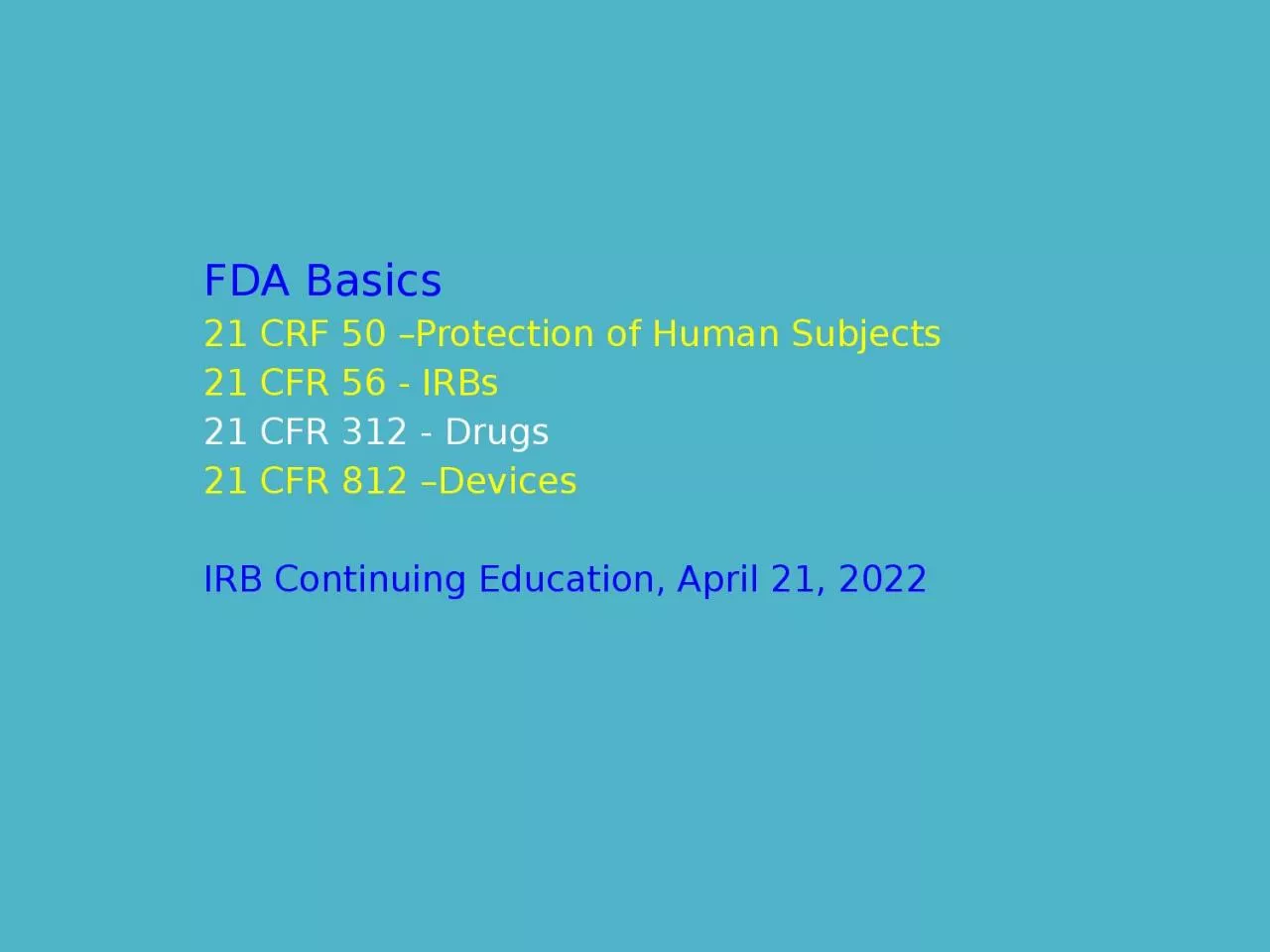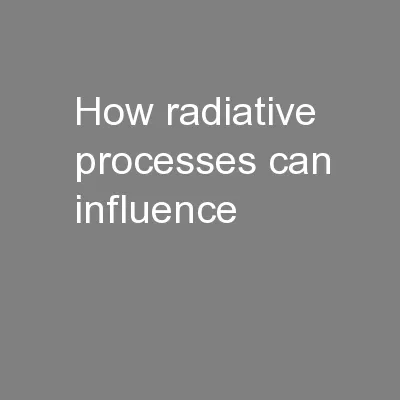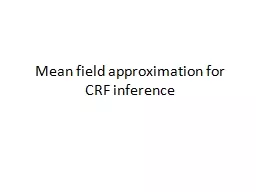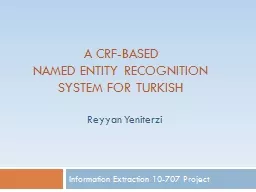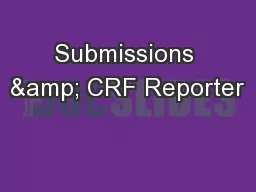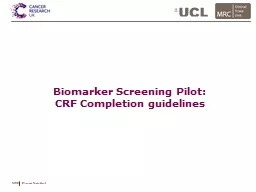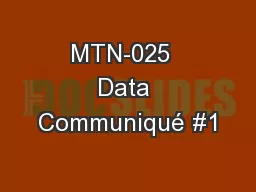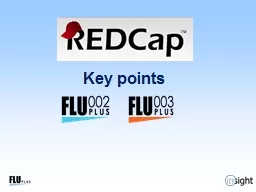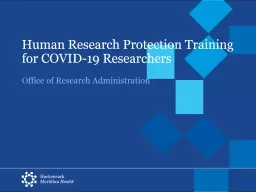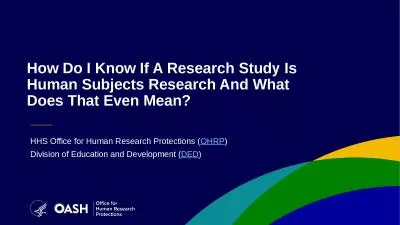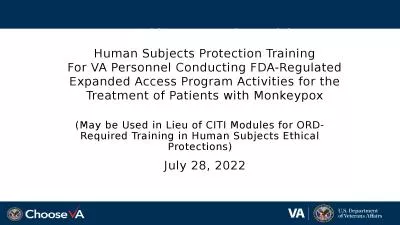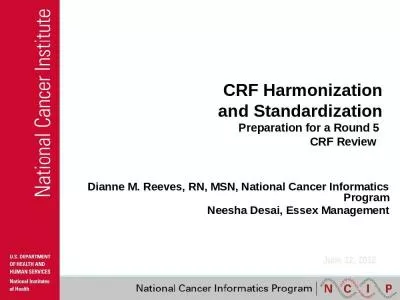PPT-FDA Basics 21 CRF 50 –Protection of Human Subjects
Author : caroline | Published Date : 2023-07-09
21 CFR 56 IRBs 21 CFR 312 Drugs 21 CFR 812 Devices IRB Continuing Education April 21 2022 So what is FDA regulated Conducting research with drugs devices supplements
Presentation Embed Code
Download Presentation
Download Presentation The PPT/PDF document "FDA Basics 21 CRF 50 –Protection of Hu..." is the property of its rightful owner. Permission is granted to download and print the materials on this website for personal, non-commercial use only, and to display it on your personal computer provided you do not modify the materials and that you retain all copyright notices contained in the materials. By downloading content from our website, you accept the terms of this agreement.
FDA Basics 21 CRF 50 –Protection of Human Subjects: Transcript
Download Rules Of Document
"FDA Basics 21 CRF 50 –Protection of Human Subjects"The content belongs to its owner. You may download and print it for personal use, without modification, and keep all copyright notices. By downloading, you agree to these terms.
Related Documents

